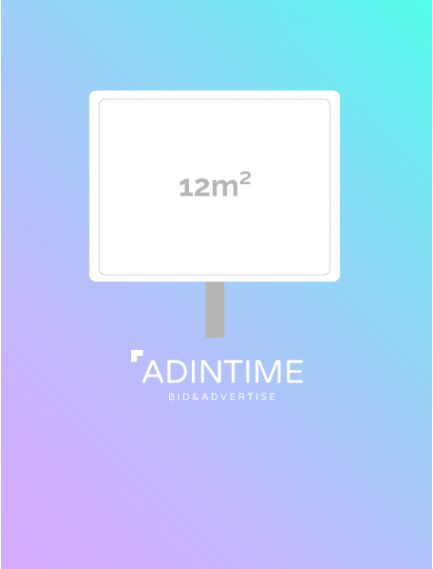To calculate the ROI (Return on Investment) of a marketing campaign, use the formula: (Earnings generated - Campaign costs) divided by the campaign costs multiplied by 100. This measures in percentage terms how much each euro invested has brought in, enabling you to assess the effectiveness of your actions.
Why calculate the ROI of your marketing campaign?
Calculating the ROI (Return on Investment) of a marketing campaign is essential for evaluating the performance of your actions and adjusting your marketing strategy. It lets you know whether every euro invested is generating a tangible financial return, and where to optimize your efforts to maximize sales.
According to a HubSpot study, 63% of marketers consider ROI to be the main indicator of the effectiveness of their campaigns. A high ROI indicates that your investments, whether in content creation or advertising campaigns, are paying off.
Conversely, a low ROI indicates the need to review your approach to improve the efficiency of your investments.
Elements to consider when calculating the ROI of your campaign
To calculate the ROI of a marketing campaign, several key elements need to be taken into account. Each factor, from marketing expenditure to the results generated, plays an important role in assessing the profitability of your actions. Let's take a look at the main elements that influence this calculation.
The cost of acquisition and its impact on your ROI
The cost of acquisition (or CAC) is one of the main factors influencing your marketing ROI. It represents the amount you have to invest to acquire a customer. It includes marketing and advertising expenses, as well as content creation and other indirect costs associated with converting a prospect into a customer.
The lower your acquisition cost, the higher your ROI, provided the leads generated are qualified and convert.
The role of production cost in your advertising campaigns
Content creation and production cost are also essential elements in calculating ROI. These costs include the production of videos, visuals, texts, or even costs linked to social media and the management of your advertising campaigns.
If your production costs are too high in relation to the revenues generated, it will be difficult to achieve a positive ROI.
According to the Content Marketing Institute, 72% of marketers say that creating quality content is one of the main drivers of their marketing success. Optimizing these costs while producing effective content is therefore important to maximize your ROI.
Measure marketing spend for accurate calculation
All your marketing spend needs to be taken into account to accurately measure ROI. This includes advertising costs on platforms such as Google Ads, lead generation costs and investments in social network management. Planning your advertising campaigns and your marketing plan will enable you to better allocate your advertising budget over the coming year and maximize your returns.
Key indicators for measuring the ROI of a marketing campaign
To effectively assess the ROI of a marketing campaign, it's essential to track certain key indicators (KPIs). These measurements enable you to quantify the impact of your efforts and identify the elements that most influence your results.
The conversion rate
The conversion rate is a fundamental indicator for measuring the effectiveness of your marketing campaigns.
This rate represents the proportion of prospects who have carried out a concrete action (purchase, registration, download, etc.) in relation to the total number of people who have seen your advertising or interacted with your content.
Cost per lead
Cost per lead (CPL) is another key metric for evaluating the effectiveness of a marketing campaign. It represents the average cost of obtaining a qualified lead. The aim is to maximize the number of leads while reducing the cost of acquisition.
A well-targeted campaign on platforms such as Google Ads or a social networking campaign can generate leads at a relatively low cost, increasing the overall ROI of your advertising efforts.
The impact of the sales generated by your marketing actions
Sales are, of course, the ultimate measure of the success of your advertising campaigns. A successful marketing campaign not only generates leads, but also concrete sales.
ROI calculation is therefore based on a comparison between marketing expenditure and revenue generated.
Example ROI calculation for a billboard advertising campaign
Let's take the example of a billboard advertising campaign to promote educational toys for children.
Let's assume you've invested €500 in an outdoor advertisement located in an area frequented by parents, such as near a school or shopping mall. Thanks to this campaign, you generate 50 qualified leads, i.e. 50 interested people who inquire about the products. Of these 50 leads, 10 parents buy an educational toy, generating total sales of €1,000.
The ROI calculation would be as follows:
ROI = (Revenue generated - Marketing expenditure) / Marketing expenditure
ROI = (€1000 - €500) / €500 = 1
This means that for every euro invested in the poster campaign, you generated one euro in return. Even if this result is positive, the objective would be to optimize this ROI by increasing the conversion rate, for example by making the display more targeted or by offering specific promotions to encourage more parents to buy.
Optimize your marketing spend by calculating ROI
Calculating the ROI of a marketing campaign allows you to make decisions based on hard data.
Optimizing your marketing spend based on ROI is essential to maximizing your profits, whether you're advertising on display, social networks, or other media. By taking into account factors such as cost of acquisition, conversion rate and sales generated, you'll be able to adjust your marketing strategy to achieve the best results.




 Top 30 best ads musics
Top 30 best ads musics
 The influence of advertising on purchasing behavior
The influence of advertising on purchasing behavior
 This Year Marketing Calendar
This Year Marketing Calendar
 Top of the most listened podcasts in France
Top of the most listened podcasts in France
 Top 30 best ads 2021 in France
Top 30 best ads 2021 in France
 Example of a unique selling proposition
Example of a unique selling proposition
 Advertising storyboard: how to structure your campaigns
Advertising storyboard: how to structure your campaigns
 Advertising: tips to make a lasting impression
Advertising: tips to make a lasting impression
 The best ads made by AI
The best ads made by AI
 What is a display campaign?
What is a display campaign?









